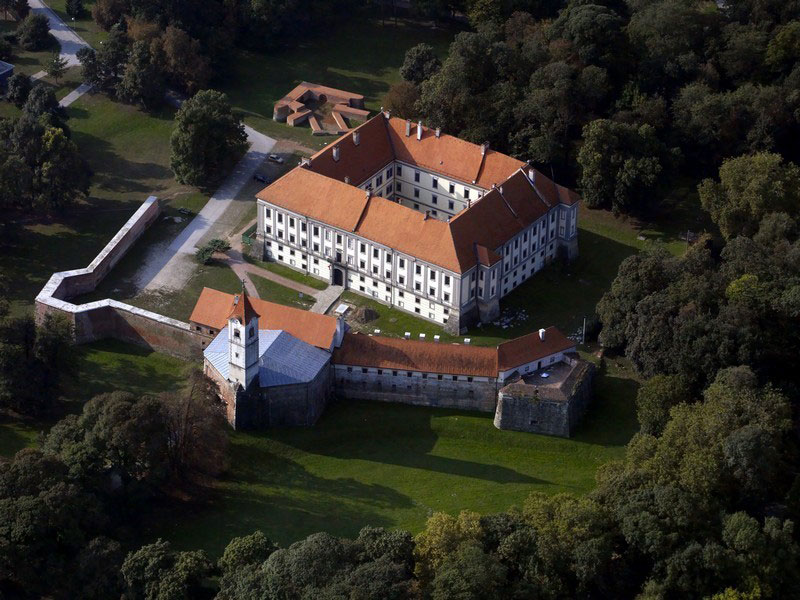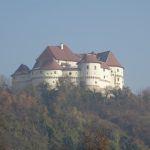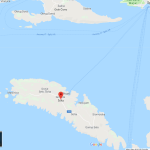The smallest and northernmost Croatian county, Međimurje, is something like a Croatian Hobbiton, only replace the Hobbits with friendly, hard-working locals and add rolling vineyards, hearty food, rich cultural heritage and lots of options for outdoor activities.
- Welcome to Međimurje!
- How to get to Međimurje and get around
- 5 things not to miss in Međimurje
- Where to stay in Međimurje?
- Where to eat?
- Wines of Međimurje
- Top 4 day trips from Međimurje
- 10 things you didn’t know about Međimurje
- Hunting and fishing in Međimurje
- Modern interpretation centers
Welcome to Međimurje!
Located in the fertile lowlands between the rivers Mura and Drava, Međimurje justifies its nickname – the Garden of Croatia. The neat little villages and towns intertwine with an enchanting landscape. The region might be small, but it offers a bounty of attractions to impress any visitor. Whether you are into food and wine, relaxation and outdoor activities, or exploring local history, Međimurje is a garden full of possibilities.
How to get to Međimurje and get around
Road
The A4 motorway, connecting Zagreb and Hungary, is the gateway to Međimurje. As a result, it’s a smooth one-hour drive from the capital to Međimurje. Additionally, there are plenty of buses operating daily between Zagreb and Čakovec, the biggest city. The local bus network functions well, connecting most smaller places in Međimurje. If you really want to take it slow, there is also the train from Zagreb to Čakovec, but it takes three hours. As Međimurje is very bicycle-friendly, cycling around is a nice option for exploring the region.
Looking for a fast, reliable and trouble-free transfer to or from Međimurje? Contact TC transfer partner Adriatic Transfers for your one-stop solution.
Plane
Međimurje is definitively a destination most often reached by road. However, the nearest airport is in Zagreb, about an hour’s drive away. Similarly, it takes about two hours from the international airport in Graz (Austria). From Ljubljana (Slovenia), it is two and a half hours, and less than three hours from Budapest.
5 things not to miss in Međimurje
Čakovec Castle
Also called Zrinski Castle after the eminent noble family that owned it, Čakovec Castle is a large medieval fortification in the heart of Čakovec city. The first version was built in the 13th century and throughout the history it was damaged and restored many times. There is still room for more renovation, but this nevertheless impressive complex now houses Međimurje County Museum. One of the most glorified events in Croatian history took place in it. Led by two powerful Croatian noblemen in the 17th century, Zrinski-Frankopan Conspiracy was an attempt to fight off the absolutism of the Habsburg rulers. Even so, the coup ended in a brutal crushing, as it was basically doomed from the start.
Međimurje wines
The tradition of wine-making in Međimurje goes back hundreds of years. Notably, a local grape variety called Pušipel is the region’s pride and joy. However, only recently have the wines of Međimurje started attracting well-deserved attention on the Croatian scene. This is happening thanks to a new wave of young and ambitious winemakers focused on quality rather than quantity.
And that quality has been recognized by international juries: the wines of Međumurje have taken the Decanter World Wine Awards by a storm. In 2020, Decanter presented 15 awards and one recommendation to the Međimurje winemakers, several more than in the year before. The awards and medals include several for the sparkling wines of Međimurje, so you should give those a try. And if you want international medals, but you’re more into beer than wines, Međimurje has got you covered there, with their Lepi Dečki brewery!
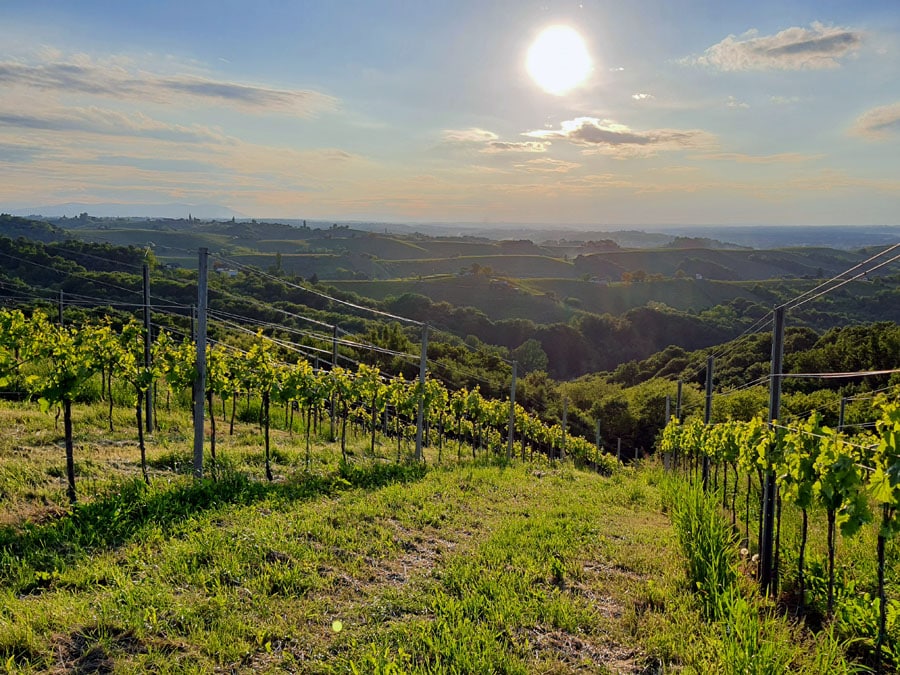
Mađerkin breg, or Mađerka’s Hill, is probably the most beautiful spot for sipping local wine. A natural viewpoint surrounded by rolling hills and terraced vineyards provides a stunning panoramic view and the perfect setting for chilling. Štampar winery runs a small bar there, with all their wines and some basic finger food. A lookout point is under construction and should be finished by 2022. Mađerkin breg can be reached by car, and is definitely a must-visit place in the very heart of Međimurje wine country.
Terme Sveti Martin Spa
Early in the 20th century, thermal springs were discovered around Sveti Martin na Muri. In time, the old spa and sports complex gradually involved into a modern resort called Terme Sveti Martin. With a range of outdoor and indoor swimming pools and wellness services, it has become the driving force of the local tourism.
Mill on the Mura River
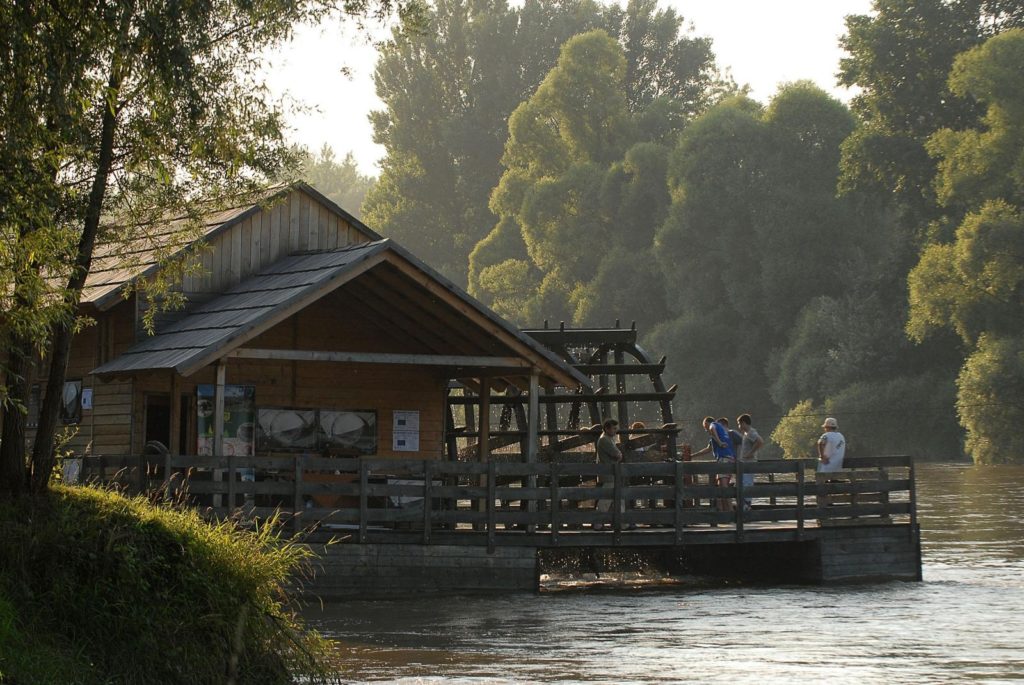
Dozens of mills used to operate on the Mura River, but they went extinct. A renovated wooden ship mill in Žabnik is now the only reminder of the old tradition. Along with this instagrammable wooden beauty floating idyllically on the river, there is a visitor center with an exhibition to provide more information, and a nice educational hiking/cycling trail. Another relic of the past is a functional cable ferry, carrying passengers across the river.
Baroque churches
Villages and towns of Međimurje abound with delightful churches and chapels, holding a lot of valuable artwork. Most of them belong to the elegant Baroque style. The Franciscan Monastery, founded by Nikola Zrinski, with the Parish Church of St. Nicholas in Čakovec is the biggest and most valuable religious building in Međimurje. St. Jerome’s Church in Štrigova is special because it has two bell towers and beautiful old frescoes. Indeed, almost every older church all over Međimurje has some special features and a story to tell.
Where to stay in Međimurje
There are several hotels in Čakovec and Prelog, offering a decent range of options. The classiest choice would be the modern Hotel Castellum in Čakovec, perfect for a city break. Obviously, the largest accommodation facility in Međimurje is Terme Sveti Martin Spa, where visitors can choose between hotel rooms, luxurious suites or apartments of different size.
Since the region is small, cozy, and not too touristy, private accommodation is regularly the obvious first choice. Apart from many private houses and apartments, there are a couple of very good bed & breakfast facilities. One of them is Mamica Pansion in Pušćine which also has a restaurant dedicated to traditional local dishes. Wine Camp run by Hažić family farm, where they grow grapes and apples, is an interesting new entry on the camping map of Croatia.
In Donje Međimurje, visit Hotel Golf in Donji Vidovec, have some of their craft beer, a dark ale with a cult following in Croatia.
Terme Sveti Martin
Family travelers and weekend break visitors often choose Terme Sveti Martin. Of course, the focus is on the spa and wellness experience, as well as sports activities. However, the large and modern spa resort is not a bad starting point for a tour of Međimurje. Additionally, the only golf course north of Zagreb in Croatia is there, and several renowned wineries are in the vicinity. In fact, as Međimurje is the smallest county in Croatia, everything is at hand.
Where to eat in Međimurje
The cuisine of Međimurje is very distinct, traditional, aimed to please and comfort. It is based on local ingredients like potatoes, cabbage, beans, dairy, buckwheat, pork, poultry, wild game, mushrooms, apples, walnuts, etc. Influences coming from Austria and Hungary are evident, but Međimurje added its own unique touch.
Some of the famous dishes include pretepena juha (thick roux soup with sour cream), mushroom soup with buckwheat porridge, turoš (cone-shaped and dried cottage cheese with red paprika and garlic), žličnjaci (type of pasta), meso ‘z tiblice (cured pork preserved in lard in a small wooden container), štrukli (pulled-dough filled with cream and cottage cheese), međimurska gibanica (cake with layers of apples, cottage cheese, poppy seed and walnuts), zlevanka (corn flour and cream cake). And let’s not forget, excellent pumpkin seed oil is one of in Međimurje, and used a lot.
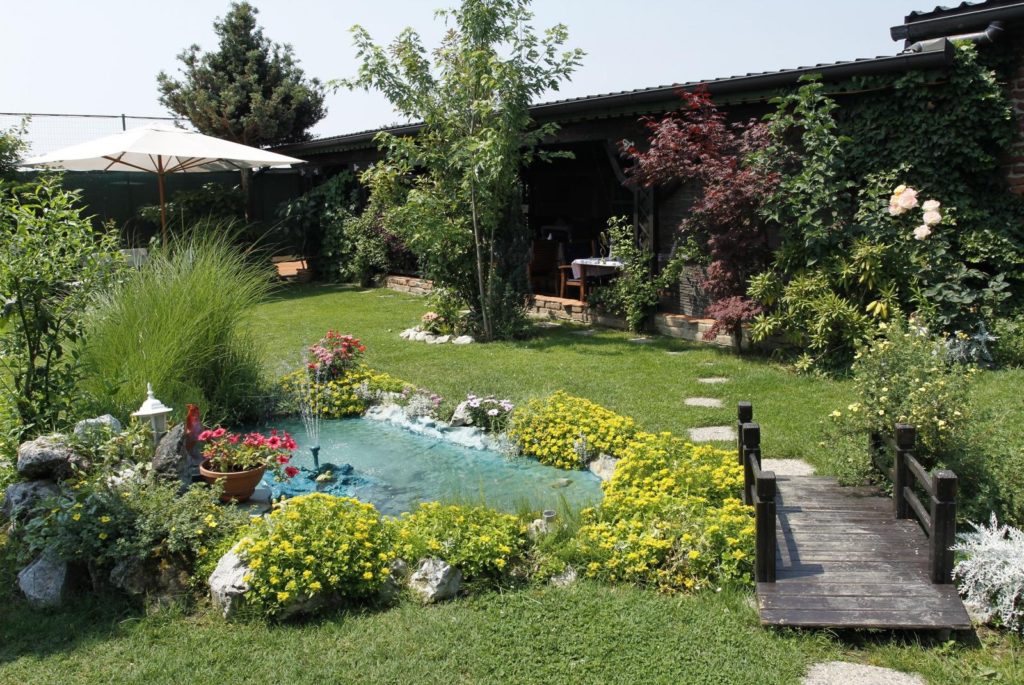
Mala hiža, the most famous restaurant, lies in the small village of Mačkovec. From the outside, it’s a picturesque old wooden house within a lovely garden. But inside you’ll find one of the best restaurants in the whole of northwestern Croatia. Mala hiža delivers a unique dining experience using local, seasonal ingredients and traditional recipes combined with the best Međimurje wines and great service.
Rural restaurants located in beautiful environments, following the farm-to-table policy, come highly recommended. Potrti kotač, Međimurski dvori or Klet Sveti Martin na Muri are fine examples. Terbotz is also worth a mention, situated in an old mansion on top of a hill overlooking the vineyards – and not any vineyards, but the Decanter-awarded vineyards of the Jakopić family, who owns the restaurant as well. Trattoria Rustica in Čakovec is a safe bet for a wider menu covering both international and local favourites.
Wines of Međimurje
Međimurje is an old wine region, as wine growing dates back to the Roman era. Even though Međimurje is quite flat (the highest peak is only 344 meters high), the rolling green slopes in the west are where the lush vineyards are. The villages of Štrigova and Sveti Urban are the hubs of Međimurje winemaking. The region belongs to the cool climate zone, so the grape varieties are mostly whites like Sauvignon Blanc, Graševina, Riesling, Muscat, Gewürztraminer, Chardonnay, and Pinot Noir in the red wine department. Yet, the star and the flagship of the region is Pušipel. This variety has several names: Furmint in Slovenia, and Furmint in Hungary. Light and crisp, with high acidity, it is an easy-drinking white wine.
Leaving behind the socialist era of large state-owned cooperatives producing mass market wine, the wine scene of Međimurje now relies on quality-driven boutique family-run wineries. They raised the bar high and the local association of winemakers set a standard for Pušipel. It is produced in two basic versions – classic and prestige. The first one is from regular harvest, the second one is a special late harvest label. There are also quite successful sparkling wines made from Pušipel grapes. Urbanovo annual wine festival taking place in May is your best ticket to the world of Pušipel.
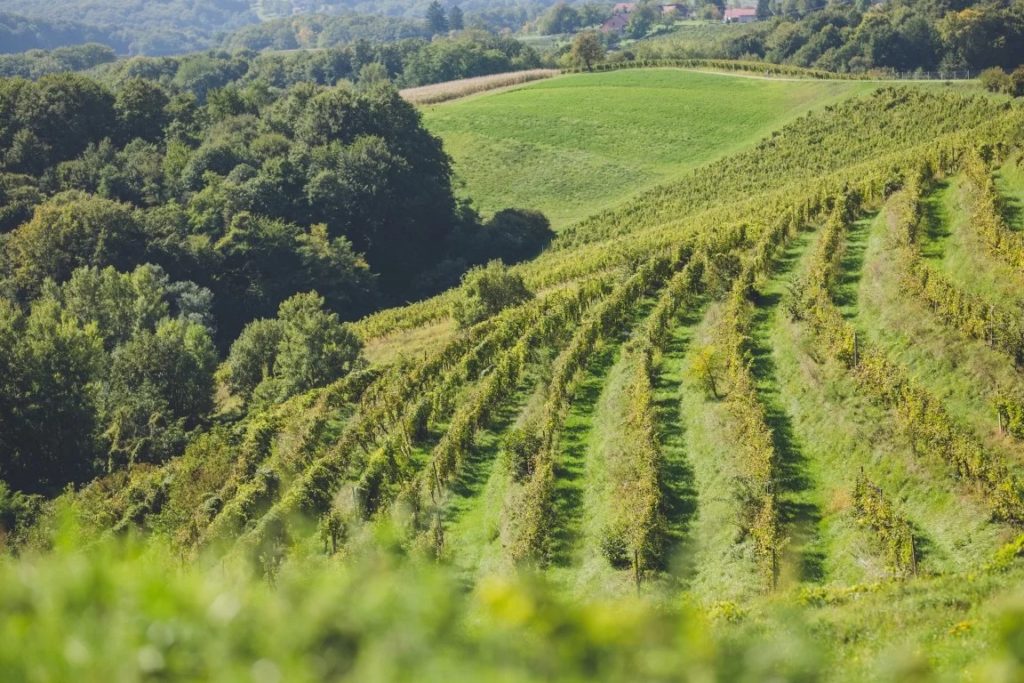
A visit to one of the wineries would definitely be an experience to remember, even if you are not a wine expert. Book in advance and save a few hours for a session of tasting, learning, and mingling with the winemakers. Some of the bigger, well-known names are Dvanajščak-Kozol, Štampar, Cmrečnjak, Jakopić, Belović, Novak, Lovrec (their estate includes an ethnographic collection). Hažić family has a lovely estate, where they grow apples along with grapevine (and have great wines!). They have just opened the first camp in the area, surrounded by vineyards.
Top 4 day trips from Međimurje
Varaždin
The Baroque capital of Croatia and one of the most charming cities in continental Croatia lies directly south of Međimurje. Its historic core, beautiful architecture, interesting museums, and relaxed vibe make it a great day-trip destination. As the former capital of Croatia, Varaždin has a long history. Outside the old center, Drava River Waterfront and the beautiful historic Varaždin Cemetery are must-visit spots. Vibrant at all times, the city explodes with positive energy during its two major festivals – Špancirfest and Varaždin Baroque Evenings.
Trakošćan Castle
Often combined with a visit to Varaždin, this gorgeous castle lies around an hour’s drive southeast from Čakovec. Dating back to the 13th century, it was built for defense, as a small observation fortress. Today’s spectacular Neo-Gothic look is the result of a major renovation done in the 19th century. If you like stories about medieval knights, your imagination can go wild in Trakošćan Castle. Now state-owned and protected, it has been turned into a museum. Amazing enough on its own, the castle comes together with a large landscaped park and an artificial lake. It is perfect for easy hiking, a romantic walk or just to sit down and relax.
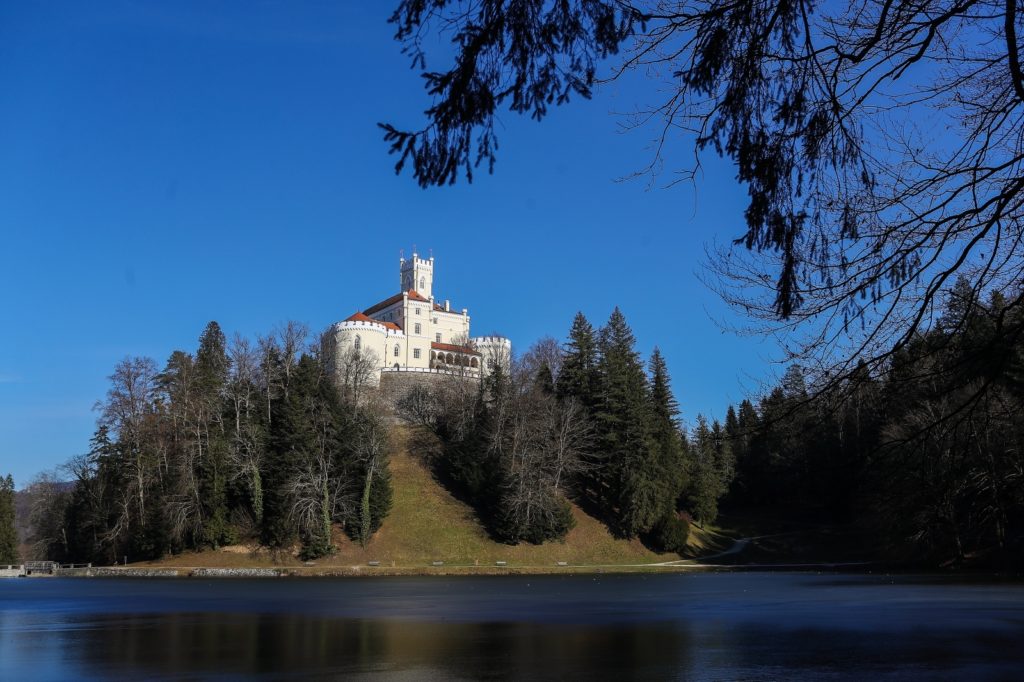
Koprivnica and Hlebine
Koprivnica, the center of Podravina region, is less than an hour away from Čakovec. Today a pleasant small town with a population of 30,000, it was first mentioned in the 13th century and there is a lot of history to unravel. A few hours is enough for the tour of the old town and its major sites. One of them is the old Koprivnica Synagogue, now a protected monument of culture. Naïve art is very popular in this part of Croatia and the nearby village of Hlebine is where it’s all at. Koprivnica Gallery offers a nice display of naïve art style. But if you want to get to the roots, visit Hlebine. It is the birthplace of renowned artists like Krsto Hegedušić, Ivan Generalić and Josip Generalić. Although the glory days of Hlebine school are behind, naïve painters and sculptors still work there and keep the tradition alive.
Ludbreg
Unlike Međugorje in Hercegovina, which attracts over a million religious tourists a year, Croatia has an actual certified miracle a short drive from Međimurje. Not only that, but you can also visit it and attend Holy Mass in its presence. Learn more about the Eucharistic Miracle of Ludbreg in the TCN One Minute Ludbreg video above.
Ludbreg is most famous for its claim to be the centre of the world, something locals celebrate once a year when the fountain on the main square dispenses not water but excellent Ludbreg wine. It is also home to one of the leading art restoration houses in Europe. A quirky little town and well worth an afternoon. For more info, check out Visit Ludbreg on the Croatian Road Less Travelled. Or watch more in the One Minute Ludbreg video series.
10 things you didn’t know about Međimurje
The home of the railway in Croatia
The first railway line in Croatia was opened in 1860, connecting Kotoriba and Macinec via Čakovec. In the time of the Habsburg Monarchy, the goal was to connect Budapest with Trieste and Vienna through Croatia and Slovenia. The train station in Kotoriba is the oldest in the country, and trains still stop there. One other small factoid: Međimurje si divided into Gornje (Upper; the hills on the west of the province) and Donje (Lower; the flat land on the east side), and the “border” between the two is the – railroad!
Gold rush in Međimurje
There is gold to be found in the sands of the Mura and Drava rivers. The tradition of gold prospecting in Međimurje is centuries old. The quality of gold from the Drava has always been highly esteemed, and even the Empress Maria Theresa was a big fan of the jewelry made from Međimurje gold. There are still some prospectors practicing the old-fashioned process, although on a much smaller scale. And speaking of black gold, the first oil field in Croatia, maybe even in the world, was in Peklenica. People dug for oil way back in 1856, even before the practice came to the USA. Meet the very last gold prospector, Mate Horvat. Back in 2016, aged 94, he gave a fascinating demonstration of the gold panning process and way of life. Sadly he passed away a couple of years ago.
St. Jerome might be a Međimurje native
St. Jerome, Latin priest and scholar from the 4th century, was born in Stridon. Although the exact location of this town in the Roman provinces is unknown, some historians suggest it might be Štrigova. What makes Saint Jerome so important? Well, he is the one who undertook the hard work of translating the Bible into Latin.
Porcijunkulovo, a festival that celebrates Međimurje
Porcijunkulovo is a summer festival, first held more than 50 years ago. It started as a very traditional fair, combining old crafts with the Roman Catholic feast of Our Lady of the Angels of the Porzioncula. Gradually it has evolved and turned into an event that celebrates everything Međimurje. Now it includes everything – from traditional workshops, craft presentations, and art shows to family fun, open-air concerts, food, and wine. You don’t have to pronounce it, just be there.
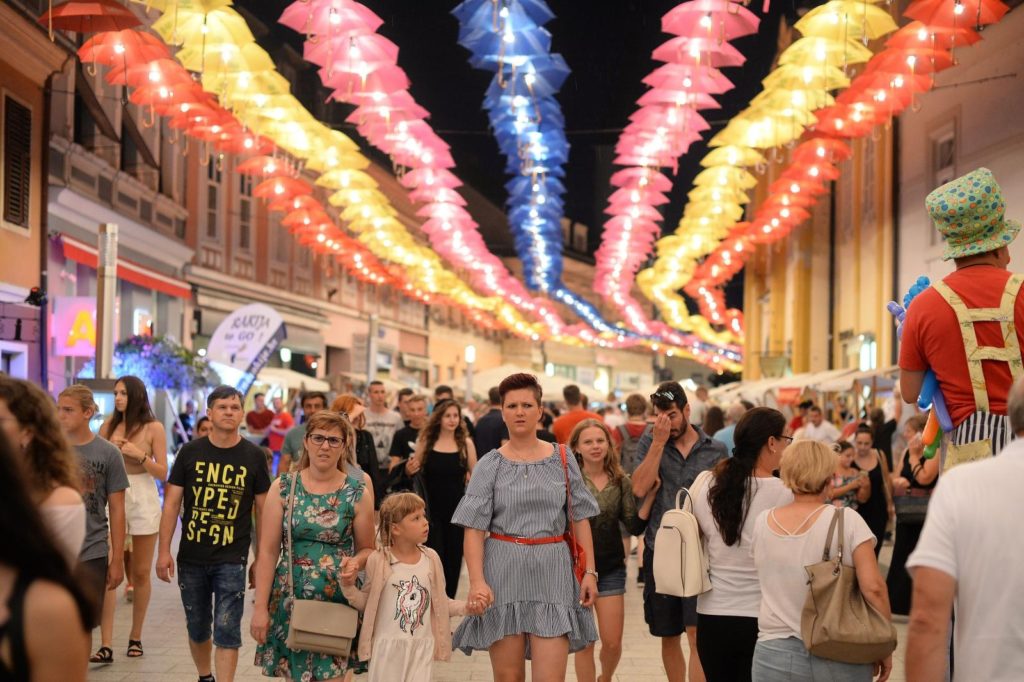
Međimurje has its own coffee
You’ve heard of the Irish coffee. Did you know there is also something called Međimurje coffee? Actually, it’s more like a dessert than a beverage. Guaranteed to energize you and satisfy your sweet tooth. Not very traditional at all, it was created in the second half of the 20th century, in a cult restaurant called Međimurska hiža. It consists of coffee, rum, custard and whipped cream.
Ivan Ranger’s frescoes adorn Štrigova
Ivan Ranger, or Johann Baptist Ranger, was a very influential and respected Baroque painter from Tyrol, praised as a fresco master. He did his finest works in churches of northwestern Croatia, in early 18th century. One such masterpiece is hidden in St. Jerome’s church in Štrigova, the former seat the Order of Saint Paul the Hermit.
Klopotec, once a bird-scarer, now a reason to party
Klopotec is a funny looking thing that was used as a bird scarer in vineyards of Međimurje, Slovenia and lower Austria. Set on a high wooden pole, it was propelled by wind and produced a clapping sound that scared the birds off. It would be installed in August, just before the grapes are ripe. Apparently, klopotec is obsolete nowadays, but still very cute. At Hažić winery and family farm they decided to organize a whole event around the ceremony of setting a kloptec up. With lots of music, wine and good fun.
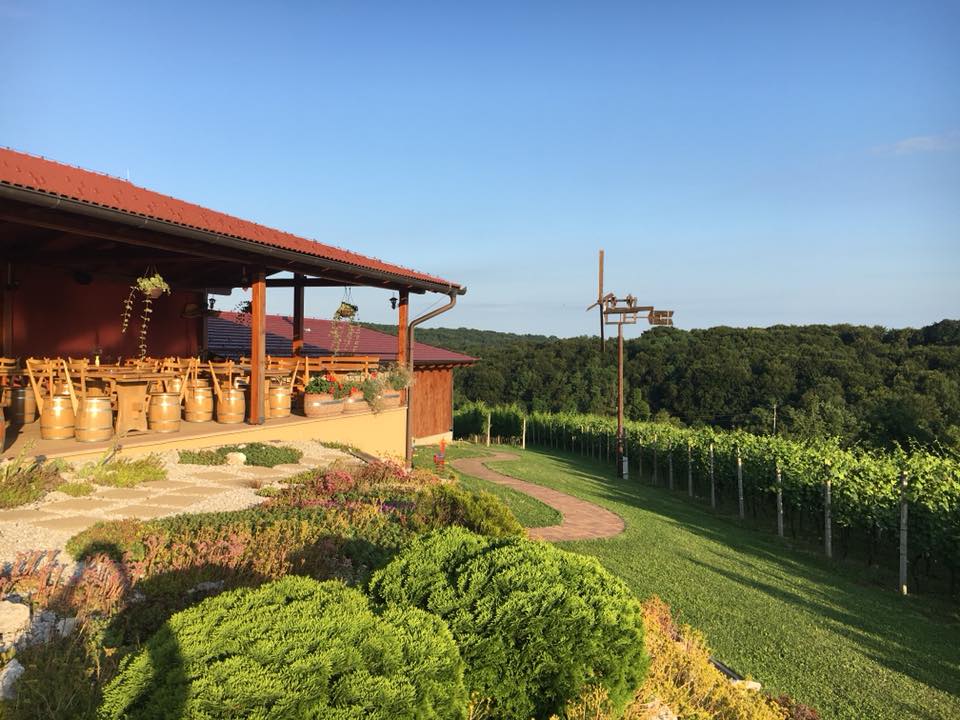
UNESCO appreciates Međimurje music
Traditional folk music from Međimurje is something truly special and beautiful. No wonder that UNESCO put the Međimurje folksong, called popevka, on its Representative List of the Intangible Cultural Heritage of Humanity. These traditional songs, full of emotion, follow all aspects of local life; there’s one for every occasion. Many singers dedicated their lives to preserving this tradition, like the legendary Teta Liza. Popular interpreters include Lidija Bajuk, Žiga or Dunja Knebl, while younger generations keep popevka alive with their fusion of tradition and modern sounds.
Rudolf Steiner was born in Međimurje
Maybe not so widely famous, Rudolf Steiner (1861-1925) was quite a remarkable and versatile man. This Austrian philosopher, social reformer, architect and esotericist is best remembered as the founder of the anthroposophy movement. He is also behind more popular and wide-spread concepts like Waldorf education and biodynamic agriculture. In Donji Kraljevec you can visit his birth house and then learn more about his work and legacy at Dr. Rudolf Steiner Center.
Impressive collection of old-timers
Nobody would expect a museum in a small village of Selnica, yet alone a unique and quite serious collection of old-timers. Yet there it is, Šardi Old-Timer Museum, powered by sheer enthusiasm. The collection features old automobiles, motorbike and tractors, as well as antique tools used by craftsmen like carpenters and shoemakers.
Hunting and fishing in Međimurje
Lush and clean, Međimurje is a popular destination for hunters, too. There are hunting grounds all over Međimurje, specialized in low game and birds. This means pheasant, partridge, wild goose and duck, but rabbit and deer as well. Local hunting clubs provide all assistance with the organization and logistics.
Obviously, life near two big rivers means fishing is a very common hobby. Some of the most attractive locations are the channel of Dubrava Hydro Power Plant, Marina by Prelog, Zrinski channel near Kuršanec, gravel pits by Ivanovec and Turčišće, the Mura backwaters by Križovec and Žabnik, the Mura river bed from Novakovec to Podturen and around Kotoriba, the mouth of the Trnava river, etc. You can expect tench, crucian carp, Prussian carp, largemouth bass, wels catfish, Northern pike, zander, chub, common carp, grass carp and common bream, among others. A fishing license can be purchased at local angling clubs or fishing and bait stores.
Modern interpretation centers
As much as traditional museums and visitor centers are welcome and needed, modern times call for modern methods. Two great places have been opened recently, focused on presenting Međimurje and its heritage with lots of interaction, playful elements and multimedia. Med Dvemi Vodami Visitor Center in Križovec is dedicated to preserving and promoting the natural beauty of Međimurje. Međimurje Malo Ecomuseum in Čakovec is there to give you an overview of life in Međimurje, its history, culture and nature, in a very interesting way. Finally, exhibitions where kids will not be bored!
More information
For more updates and detailed information, visit Međimurje Tourist Board official website.
To follow the latest news from Međimurje, check out the dedicated TCN page.

